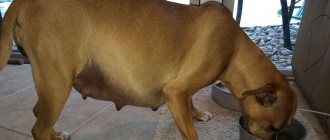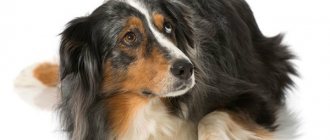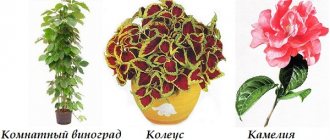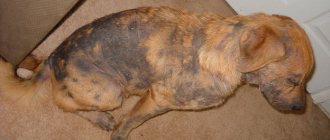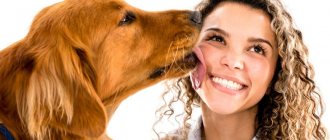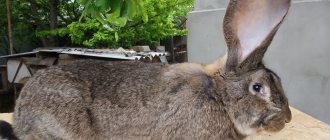This question is often asked by both dog owners and veterinarians. Unfortunately, it is not entirely clear what the reasons for this behavior are - after all, dogs are carnivores. However, it is worth analyzing When and how much does a pet eat grass?!
Some people believe that eating weed should be considered a distorted appetite (Pica syndrome), which involves eating inedible things. However, we see from fecal studies that wolves, dingoes and foxes also eat grass. Therefore, this can be interpreted as a natural behavior in dogs. But what is its purpose? And can we allow our four-legged friend to eat grass?
Dogs do not have the digestive enzymes to break down and digest grass fibers, causing it to pass through the four-legged dog's digestive tract unharmed. It is also not a nutritious element in the diet of four-legged animals. However, it is a source of fiber, so- called roughage, containing chlorophyll and potassium .
Why then does the dog eat grass?
Some dogs eat grass due to an inadequate or poorly balanced diet. This behavior is explained by a deficiency of an ingredient or more nutrients in the diet, especially when the owner prepares the food himself. In this case, dogs eat grass mostly every day, however, they eat it slowly and selectively - the dog chooses those blades of grass that will complement its deficiencies. The problem of eating grass most often disappears after adding fiber to the food, that is, introducing feed with a high fiber content . Therefore, it is worth analyzing the composition of your pet’s diet.
Is it always normal for animals to eat grass?
It is necessary to look at the behavior and condition of the pet. When a dog eats grass, regurgitates it, and then does not stop happily running and enjoying life, then everything is fine. Especially when this is done rarely: 1-2 times within 7 days. When eating grass with further vomiting occurs more often and to a greater extent in the morning, then it is probably necessary to consult a doctor.
In a similar way, you can improve the metabolism in the animal’s body, which arose due to an incorrect diet. The owner needs to monitor the dog’s diet and include only healthy elements in the diet, including vegetables and herbs. The dog should eat more meat.
How to feed your dog correctly
Pay attention to the following signs that should prompt you to contact your veterinarian:
- the animal’s behavior changes sharply to an apathetic state;
- temperature is low or elevated;
- diarrhea;
- the wool has lost its shine;
- there is blood in the vomit;
- the nose is dry, and the mucous membranes of the mouth and eyes have become pale or yellowed.
Weed may cause vomiting
The reason for this behavior is gastrointestinal disorders. Here the topic is a little more complicated. The grass tickles the palate and irritates the mucous membrane of the gastrointestinal tract, so it can cause vomiting, which is why some dogs eat grass, causing stomach cleansing. Dogs eat grass when they feel ill due to digestive problems, food poisoning, and liver or pancreas problems. Flatulence or gas can also trigger pets to eat grass. Vomiting is not the rule, and some studies on dogs show that dogs that eat grass very frequently do not vomit at all.
Improving the functioning of the digestive tract
The herb improves the functioning of the entire digestive tract. Thanks to this plant food you get:
- cleanse the intestines;
- tidy up the gastrointestinal tract;
- replenish the lack of fiber in the body;
- prevent many diseases;
- remove parasites;
- supplement an unbalanced diet with healthy ingredients.
Beethoven (dog): what breed, what is it called
Cleansing the intestines occurs due to the fact that the grass, like a brush, passes through it and “cleanses” accumulated mucus, removes fecal stones, “feeds” beneficial bacteria, helping them multiply and normalize the microflora.
Note . After eating the grass, the animal may have frequent and loose stools.
The dog is bored
Yes, just like a child, when he is bored, takes a cake, cookies or candy, so a dog eats grass. This is a treat for the animal.
After chewing the grass, the dog may even spit it out without swallowing. This is a form of entertainment for animals, like chewing gum for humans, only useful.
A dog may eat grass because it's bored.
A game
Yes, a puppy and an adult animal can consider grass as a toy. They won’t put everything in their mouth, but this kind of weed is easy. They can “carry” around the floor, they can throw it up, they can play in their own way. In principle, this is safe, except perhaps that it gets into the mouth together with grass, and then debris and insects can get into the stomach. But the fangs and tongue will be cleaned.
If something harmful gets into the dog’s body, the animal will begin to vomit. The reason is that the body’s protective functions are triggered.
Allow or not
This issue is controversial. On the one hand, dogs know better what they need, including food. But on the other hand, like a small child, they can eat something that will harm them. Therefore, the animal owner has two options. First, let your pet eat whatever he wants. The second thing is to take some grass, take it to the vet and see what he thinks about it.
Note . Even if the dog is allowed to eat grass, it should not be given the grass that grows along roadways and near industrial enterprises.
Grass can be poisonous to dogs
However, it should be remembered that eating grass can sometimes end tragically for four-legged animals! Numerous pesticides, fertilizers and chemicals used in gardening can harm the health and even life of your dog. Some chemicals do not cause symptoms of toxicity, but they can contribute to the formation of cancers such as lymphoma and bladder cancer. It is very important to check the packaging of any weed or insect control products we use in the garden before letting your dog out into the garden.
List of the most common poisonous plants dangerous to dogs:
- narcissus,
- hydrangea,
- lily of the valley,
- azalea,
- digitalis,
- lark,
- holly thorn,
- honeysuckle,
- boxwood,
- thorny fire,
- rhododendron and related species,
- horse chestnut,
- rowan tree,
- Mistletoe and the Star of Bethlehem.
We also remember that public lawns are also a source of pests. Contamination of grasses with feces or urine is quite common, and therefore the easiest way to contract canine tapeworms. In some cases, a dirty clearing is a source of bacteria and viruses that can cause disease. Additionally, eating a snail or its mucus, or a frog or its venom can end very badly for the quadruped, causing it to exhibit many alarming clinical symptoms.
Allow or not
Even if you are sure that your dog eats properly and gets everything it needs from food, in my opinion, it is okay to allow your dog to “pinch” the grass. Of course, greens should not be allowed to be consumed as a substitute for the main meal. But nothing bad will happen from a few blades of grass eaten with pleasure. Moreover, many dogs get great pleasure from the taste and smell of this or that herb. It happens that our Jack likes to “get caught” in a clearing and pick another blade of grass. But he does this extremely rarely. Maybe because he already gets enough vegetables and fresh herbs.
Dog eats grass through parasites
It is a myth that a dog will eat grass if it is contaminated. If the infestation is severe, the dog may experience gastrointestinal dysfunction and therefore an urge to eat grass. If this happens sporadically - the dog eats small amounts to vomit and perceives it as special help for stomach problems - then we should not worry. However, most often, in case of illness, the dog eats grass greedily, in large quantities, taking each breast into his mouth. It also happens that the dog whines at the door to go outside, then rushes to eat grass like crazy. This is not good behavior - it is not always capable of provoking vomiting, sometimes it is just empty reflexes.
How to protect your pet from the consequences of eating greens on the street?
Artificial grass for dogs is a great option to keep your pet safe. You can grow it at home or in your summer cottage. In the first case, you will need seeds from a store or street (they are easy to collect if you know what the right one looks like). At home, you only need to make sure that the dog does not drop the potty or play with the soil. It is better to give this grass to young puppies under supervision. In a suburban area, plant “greens” away from flower beds and beds so as not to accidentally water them with fertilizer.
If you don’t have a summer house, and you haven’t yet had time to sprout your oats or wheat, pick “good” grass on the street (far from the road), bring it home and wash it. It will be safer than eating lawn outdoors.
We found out what grass dogs eat and why they do it. If the behavior is irregular and there are no warning signs, do not worry and follow safety measures.
What to do if your dog eats too much grass?
By consuming large amounts of grass, very often dogs also clog their digestive tract, so we should not allow them to do this. Additionally, if this behavior is accompanied by alarming symptoms such as diarrhea or constipation, severe vomiting, stomach pain or lethargy, a visit to the veterinarian's office is necessary.
I know from experience that often during procedures involving the removal of a foreign body from the gastrointestinal tract, we first remove clouds of grass that sometimes complicate and interfere with the operation (endoscopic and surgical methods). Here the scheme is most likely such that the dog, having swallowed a ball or sock, feels bad and, to help itself, willingly begins to eat grass.
What grass can four-legged pets eat?
0 Source:
Not all herbs are created equal for dogs. Wheatgrass, bluegrass, wheat, oats, rye, sow thistle, calendula, chamomile, as well as tops of agricultural crops - carrots, beets and herbs (mint, dill, parsley) will benefit the dog's body. Eating should not be prevented, but only if the vegetation is clean and has not recently been treated with pesticides and fertilizers.
0
Source:
Of course, ideally, your pet should only be allowed to eat grass that grows away from roads. But in reality this is not always possible. If you have a plot of land or a summer house, you can simply sow the necessary herbs and crops yourself. If this is not possible, greens can be purchased at the market, at a pet store, or even sprouted in a box on a windowsill, like oats.
0
Source:
Thus, nature acted wisely, giving dogs the knowledge about suitable and healthy grass at the genetic level. Therefore, there is no need to interfere with the realization of such taste preferences, except for the following cases:
The dog eats grass because it's natural
The last and most important reason is that eating grass is natural according to some sources. And this phenomenon is the most common. Dogs instinctively eat grass, interested in its smell, texture or taste. It also happens that dogs only chew grass.
Some also look to the ancestors of dogs for reasons. The original dog, before hunting, in order to hide from its victims, ate grass on which its scent remained so that they could not smell it. Another theory says that the small prey of primitive dogs were mainly herbivores, so this is how the grass got into the dog's stomach - which means it invited it to eat.
Regardless of the reasons, these grass snacks happen every now and then (like a few times a year) and only a small amount is actually ingested. We may also be under the impression that the dog only eats one type of grass and leaves the others. We also know that eating grass does not affect the health of dogs and is an inherited trait.
What if there is danger in eating vegetation?
When a dog even regularly eats grass and plants, this does not mean that the dog’s health can worsen.
There is no danger! If a dog needs to cleanse the body, then it will eat grass and plants. The only thing a pet owner can do is to ensure that the dog does not eat spoiled food instead of a harmless plant. The dog can also eat grass that has been treated with pesticides. When a dog eats grass repeatedly and feels normal, there is no need to rush to the clinic.
You need to carefully monitor what grass your dog eats.
But to be completely sure that there is no latent disease, it is better to have your dog examined by a doctor. The danger of plants lies in the fact that people use chemicals to achieve high yields. This is precisely why you need to beware of fertilized areas, and look for areas where nothing is planted. This could be a meadow or an open field. Also, the danger of vegetation lies in the fact that the grass may contain particles of excrement of sick pets and all kinds of parasites. All together causes the development of serious infectious diseases.
Another opinion that, in addition, has no scientific explanation, but is very similar to the truth: shaggy mischievous creatures simply like the taste of grass, for this reason they eat it. And also out of curiosity, since dogs’ taste organs are a tool for understanding the world. After all, a dog eats a variety of inedible, in our opinion, garbage. Thus, she learns and develops. This means that there is absolutely nothing wrong or painful in the desire to sometimes eat grass. If only all this would benefit the furry explorer.

